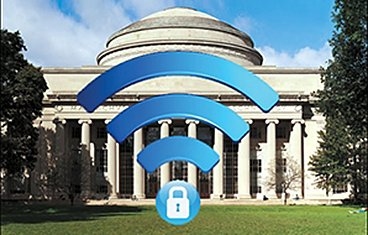Almost everyone who has a wireless network at home protects it with a password. Most businesses also require authentication to access their wireless networks. These protective measures have become essential to mitigate cyber threats and privacy concerns.
To ensure a level of protection similar to what you have at home or on the road, MIT plans to retire its open wireless networks, MIT and MIT N, this year. After the change, users will have three wireless options on campus: MIT GUEST, MIT SECURE, and MIT SECURE N.
Preparing for the transition
- If you are already using MIT SECURE or MIT SECURE N to connect to the Internet, you don't need to do anything and can continue as before. This is the best way to use the MIT wireless network.
- If you are using MIT or MIT N, don't wait for the change to occur. You can sign on to one of the secure wireless networks now with your MIT username and password, so that you don't have issues connecting later. Make it your default option. If you try to use the open wireless networks after they are retired, you may still see them listed, but will experience a failure to connect. To learn how to connect, see Wireless Networking at MIT in the Hermes knowledge base.
- You can use the MIT GUEST network if you are a guest on campus or if your device can not connect to one of the secure wireless networks. This may be the case for non-computer wireless devices such as gaming consoles. This network has limited access to MIT resources.
An important note on passwords
Make sure you have an updated MIT password (also known as your Kerberos password) before connecting to MIT SECURE or MIT SECURE N. If you experience problems connecting, update your password via the Change Your Kerberos Password page. If you still can't connect after changing your password, try connecting again later. It may take a little time (up to an hour) for the change to take effect.
When will MIT's open networks be retired?
IS&T is still assessing the community's readiness for the secure wireless networks. It is addressing instances of older passwords and support for wireless non-computers and shared devices before making the change. Retirement is expected to occur before the start of the next school year. There is no need to wait for the retirement of the open wireless networks to make the switch to secure wireless.
Other questions?
IS&T is available to help with password changes and secure wireless configurations, and has also provided documentation online. If you need assistance, contact the IS&T Help Desk.






